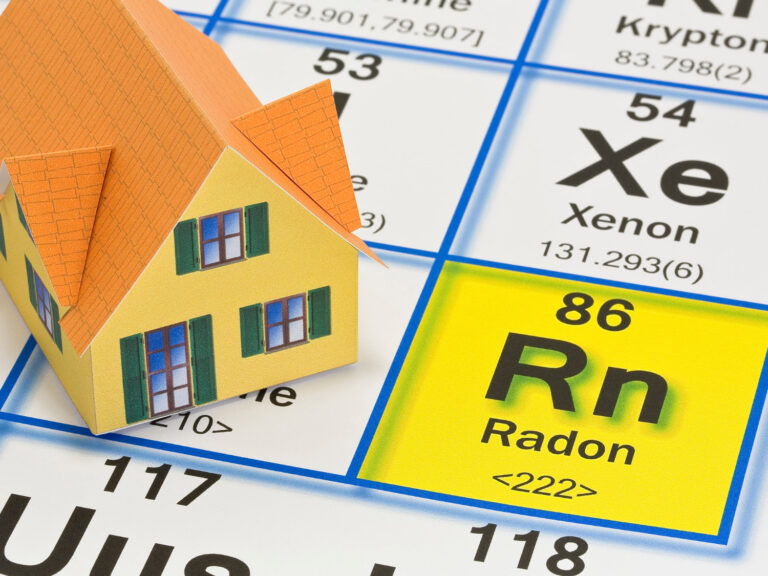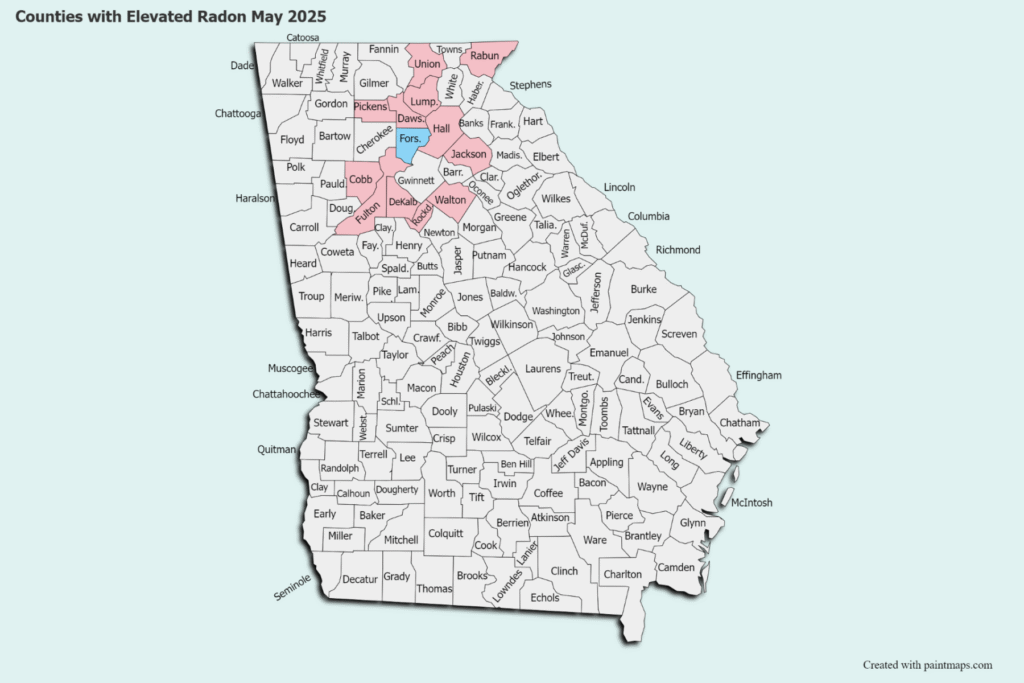
Dr. Roshan Ramlal, PhD MPH, UGA Extension, FACS Agent
Radon is the second main cause of lung cancer. About 800 Georgians die each year from lung cancer caused by radon. This gas has no smell, color, or taste. It silently slips into homes through cracks in the foundation.
A study in May showed that almost one out of every five homes tested in Forsyth County had too much radon. In fact, Forsyth County had the highest radon level (17.8 pCi/L) out of 13 counties studied (see map). That’s four times higher than what the Environmental Protection Agency (EPA) says is safe, which is 4 pCi/L. These samples were collected using test kits provided by the UGA Radon Program from January 2020 to May 2025.
All homes should be tested. If your home has too much radon, it’s important to fix it quickly to get rid of this invisible danger. Good air quality inside your home helps everyone, especially kids, older people, and those with health issues like asthma or heart disease.
Testing is cheap (about $15 for a kit) and you can buy kits online or at local hardware stores. Forsyth County libraries even have free testing kits you can borrow!
Why was so much radon found in our county? Forsyth County is in a part of Georgia called the Piedmont region. This area has very old, hard rocks, like granite. These rocks naturally contain tiny amounts of uranium.

When this uranium slowly breaks down, it creates radon gas. This gas then tries to escape from the ground. Think of our local rocks like a big, cracked puzzle. These cracks and spaces in the rocks and soil act like hidden tunnels. They make it easier for radon gas to travel up from deep underground and into the air around our homes. Homes built on top of these rocks can trap the gas until it finds cracks in the foundation, basement sump pumps, or pipes to sneak inside.
Well water can also have radon if the water has touched rocks with uranium. When this well water is used for showering, washing dishes, or cooking, the radon can escape into the air inside your home.
Testing your home is important to keep loved ones safe and lower risk of lung cancer. There is no way to tell if your home has a lot of radon without testing it. Short-term radon tests take 2 to 90 days (depending on the kit). They are the best first step to take to find out about the air quality of your home. The tests measure the average level or radon in your home. Long-term radon tests (around $30, good for 5 years) are the most accurate, but take over 90 days to complete. They are recommended to double-check short-term tests kits’ results when they are close to, or exceed 4 pCi/L.
If your home has too much radon, don’t worry. Mitigation is a way to remove radon in your home. The most common method involves inserting pipes into the foundation. A fan then sucks radon out through these pipes and sends it safely outside. The UGA Radon Program recommends using a certified professional for this work and getting estimates from more than one company.
For more information on radon, check out radon.uga.edu and the EPA’s website.